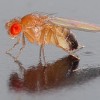HIV halts brain disease
 Adrenoleukodystrophy is a rare inherited disorder identified in patients with a defective gene that produces a protein called ALD; which leads to progressive brain damage. ALD is a transporter required for the break down fats. Defects in ALD lead to the build up of fats and the eventual damage of the myelin sheath that protects nerves. For many years the only treatment for this has been bone marrow transplants, which is limited in the availability of donors and let us not forget the number of complications that could arise.
Adrenoleukodystrophy is a rare inherited disorder identified in patients with a defective gene that produces a protein called ALD; which leads to progressive brain damage. ALD is a transporter required for the break down fats. Defects in ALD lead to the build up of fats and the eventual damage of the myelin sheath that protects nerves. For many years the only treatment for this has been bone marrow transplants, which is limited in the availability of donors and let us not forget the number of complications that could arise.
A new treatment has shown itself in the form of gene therapy. Bone marrow cells can be treated with a modified and inactivated HIV virus carrying the correct message for the ALD gene and infused back into patients with adrenoleukodystrophy. The blood cells with the correct message would then be carried to the brain where ALD will be produced and utilized to improve the disease. At present HIV is the only virus that can deliver a therapeutic gene into the nucleus of non-dividing cells. Who would have thought that HIV virus could have a positive side?
| Print article | This entry was posted by Jermel Watkins on March 17, 2010 at 11:29 am, and is filed under Your Genes, Your Health. Follow any responses to this post through RSS 2.0. You can skip to the end and leave a response. Pinging is currently not allowed. |
No comments yet.

Did you know dolphins can stay constantly awake for weeks?
about 11 years ago - No comments
Young parents and workaholics are very familiar with the effects of sleep deprivation, and almost everyone is agreed – it’s not the most pleasant place to be! Anyone who has ever tried to be, or had to be, awake continuously for several days and nights will know how a stretch of busy time without a nap…
Brain size and intelligence- why a human is smarter than a mouse
about 13 years ago - No comments
Your brain is a complex, highly organized organ. Each mammalian brain is made of approximately 10-15 billion nerve cells, called neurons. And each brain is built of thousands of different types of neurons, called neuronal subtypes. Neurons have the amazing ability to gather and transmit electrochemical signals, the more neurons the faster signals can be…
Twilight’s Edward and Bella – Romance or Rabies? A scientific view on vampires
about 13 years ago - No comments
Today, September 28th, is world rabies day! Rabies is an animal borne viral disease that kills nearly 100 percent of its victims once the infection reaches the brain. But have you ever wondered how this fatal virus can affect the brain, causing victims to become ´rabid´? I was thinking about it in those autumn days…

Jumping genes in your brain?
about 13 years ago - No comments
Mobile chunks of DNA that walk their way from one position in the genome to another may affect neurological diseases and could have subtle influences on normal brain function and behavior, according to a recent study in Nature. Alu is an example of a so-called “jumping gene” – a transposable DNA sequence that “reproduces” by…

Mapping the migratory patterns of……brain cancer cells?
about 13 years ago - No comments
We’ve all watched fascinating David Attenborough documentaries about the migratory patterns of birds, sub-Saharan animals and butterflies, but cancer cells? Yes, cancer cells migrate too. More specifically, brain cancer cells. Researchers have known for a while that not only are glioblastoma multiforme cells highly resistant to chemotherapy, but they can also deftly migrate away…

Trying to unlock a new door…..
about 14 years ago - No comments
How is drug development moving along? Well, this is a very good question for we are still plagued by some elusive diseases, cancer for example. There have been many drugs developed targeting proteins involved in disease states some of which have proven to be quite effective. However today the steam engine for identifying drug targets…

Origin of ALS discovered
about 14 years ago - No comments
ALS (amyotrophic lateral schlerosis, a.k.a. Lou Gehrig’s disease) is a devastating disease which kills motor neurons, leaving patients paralyzed and unable to function. Although patients remain aware and for the most part mentally undamaged, most patients die within 2-3 of onset as the disease progressively leaves them trapped in a body that is unable to…

Model Organisms
about 14 years ago - No comments
I asked a group of 5th graders the other day whether or not we can learn anything from studying other living things. For example, if we mutate or change the DNA of another organism, like fruit flies (D. melanogaster), can we learn anything about what can happen when human DNA changes? For this particular class,…

Will insulin come to the rescue of AD patients?
about 14 years ago - 1 comment
Alzheimer disease (AD) is a neurodegenerative disease of the brain that is divided into early- and late-onset groups. AD is characterized by the build up of amyloid plaques, neurofibrillary tangles and the loss of connections between neurons. It is the most common type of dementia especially in the elderly. The exact causes of AD are…

Brain tumors snack on cholesterol
about 14 years ago - No comments
We all know cholesterol can be bad for us, and we need to watch our intake of eggs, cream and butter. But scientists have just discovered that some brain cancer cells love to snack on cholesterol too. Researchers at the University of California Los Angeles and Ohio State University Comprehensive Cancer Center are investigating a…
